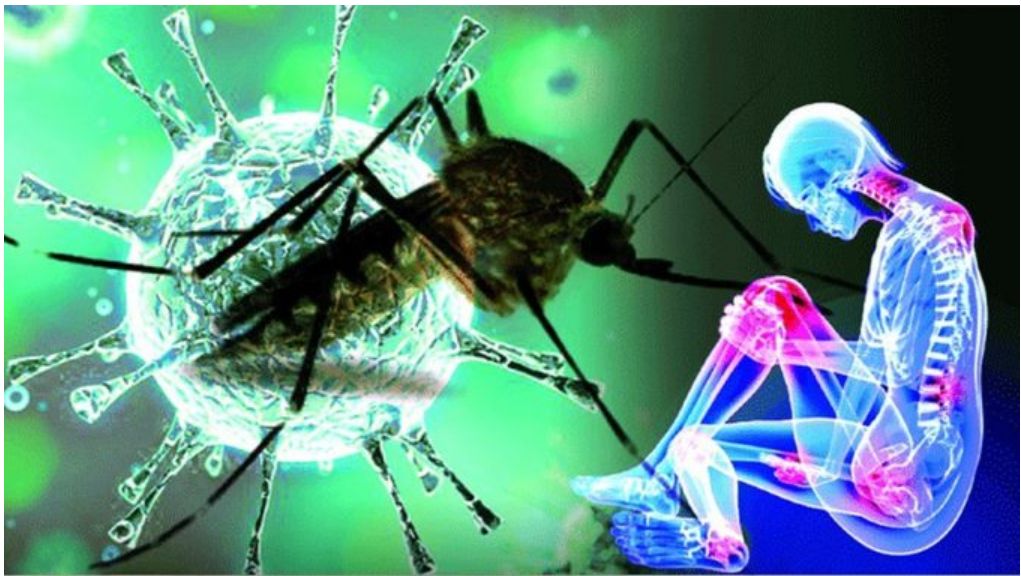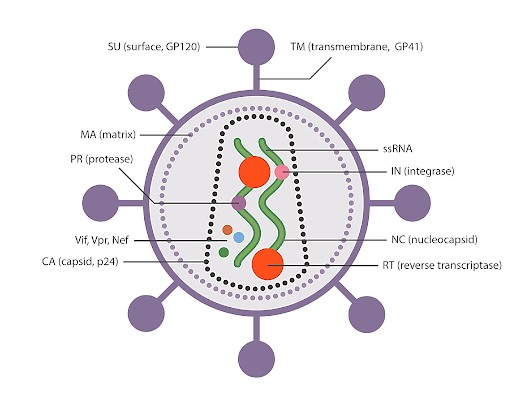
SARS-CoV-2 variants products available
The pandemic coronavirus disease 2019 (COVID-19) is caused due to Severe Acute Respiratory Syndrome Coronavirus 2 (SARS-CoV-2) which belong to the subgenus Sarbecovirus. Coronaviruses are the members of the enveloped ssRNA viruses that cause respiratory, enteric, and cardiovascular diseases in humans and animals. The SARS-CoV-2 is an Angiotensin I converting enzyme 2 (ACE2)-tropic virus, and the “spike” (S) protein of the viral envelope would bind to the nasopharyngeal mucosa and alveolar pneumocytes that express ACE2 at their surface. The clinical spectrum of COVID-19 ranges from mild to very severe cases. It has been hypothesized that viral infection drives an exacerbated inflammatory response that leads to severe lung injury which could require ICU admission, mechanical ventilation and further increases the risk of multi-organ failure and death.
The Renin-Angiotensin-Aldosterone system (RAAS) seems to plays a key role in the pathogenesis of COVID-19. The angiotensin-converting enzyme (ACE or ACE1) catalyzes the synthesis of Angiotensin-II (Ang-II) from Ang-I, and ACE2 hydrolyzes Ang-II into Ang-1–7. Ang-II binds to the AT1-receptor driving vasoconstriction, fibrosis, inflammation, thrombosis, among other responses; while Ang-1–7 binds to the AT2-receptor with more vasodilation and less fibrosis, inflammation, and thrombosis. The ACE and ACE2 are thus seen as opposite players in the balance which determines the risk of hypertension and cardiovascular disease. In lung, ACE2 is responsible for a protective response by reducing oedema, permeability and pulmonary damage. Moreover cardiovascular disease and hypertension and are common comorbidities in COVID-19, and are strongly related to the risk of hospitalization and death in individuals exposed to SARS-CoV-2.
Both, acquired and inherited factors related to differences in the expression and function of the RAAS components could explain the risk of developing COVID-19 and adverse events. For instance, ACE2 expression in the lungs distinctly reduces with age and is higher in men in comparison to women. This could explain the greater risk for adverse outcomes in elderly and male. In general, conditions related with a reduced ACE2 expression would increase the risk for cardiac hypertrophy, hypertension, and heart failure. In opposition, higher activity of ACE would increase the risk of lung and cardiovascular disease by increased activity of the Ang-II/AT1R axis. Common variants in the two ACE genes have been associated with the risk of hypertension, heart disease, renal failure, and pulmonary disease. In fact, the ACE insertion/deletion (I/D) is one of the best characterised human polymorphisms. Individuals with a D/D genotype showed the maximum blood ACE levels, and this elevated expression would explain the greater risk for cardiovascular and respiratory disease among persons who are deletion-homozygous. This polymorphism has been connected with the outcome in acute respiratory distress syndrome (ARDS) by some researchers, and also with the progression of pneumonia in SARS.
As angiotensin-converting enzyme 2 (ACE2) receptor on host cells acts as an entry point for SARS-CoV-2, which makes ACE2 as a risk factor for SARS-CoV-2 infection. In this regard, ACE2 variants previously reported to be linked to other disorders like hypertension and other cardiovascular diseases. Moreover, ACE2 expression variation and related epigenetic factors may play a key role in determining an individual’s susceptibility to COVID-19. As the first step of the viral replication, the virus binds to the host cell surface prior to entering in the cell. The viral Spike protein recognizes and attaches to the Angiotensin-Converting Enzyme 2 (ACE2) receptor present on the surface of type I and II pneumocytes, endothelial cells, and ciliated bronchial epithelial cells. Drugs targeting the interaction between the Spike protein of SARS-CoV-2 and ACE2 may offer protection against viral infection.
All viruses generally change their form, some changes can affect the virus’ properties like how easily spreads, associated severity of disease, the performance of vaccine, therapeutic medicine, diagnostic tools. Similarly, SARS-CoV-2 is also changing its forms and forming many variants. The recent emergence of SARS-CoV-2 variants, after a period of relative viral genetic stability, is a cause for concern since multiple new escape variants could emerge in the future and lead to severe epidemic rebound. D614G was one of the earliest variants that emerged and became dominant worldwide, it also was more infectious. Various variants emerged in different countries. The recent appearance of novel circulating variants has raised considerable concerns. The Spike (B.1.617 Variant, B.1.617.1 Variant, B.1.618 Variant) were produced with their respective SARS-CoV2 variant spike as the envelope glycoproteins instead of the commonly used VSV-G
Products available
- Spike (B.1.618 Variant) Pseudotyped Lentivirus (Luc Reporter)
- Spike (B.1.617.1 (Kappa) Variant) Pseudotyped Lentivirus (Luc Reporter)
- Spike (B.1.617 (Delta/Kappa parental) Variant) Pseudotyped Lentivirus (Luc Reporter)
The pandemic coronavirus disease 2019 (COVID-19) is caused due to Severe Acute Respiratory Syndrome Coronavirus 2 (SARS-CoV-2) which belong to the subgenus Sarbecovirus. Coronaviruses are the members of the enveloped ssRNA viruses that cause respiratory, enteric, and cardiovascular diseases in humans and animals. The SARS-CoV-2 is an Angiotensin I converting enzyme 2 (ACE2)-tropic virus, and the “spike” (S) protein of the viral envelope would bind to the nasopharyngeal mucosa and alveolar pneumocytes that express ACE2 at their surface. The clinical spectrum of COVID-19 ranges from mild to very severe cases. It has been hypothesized that viral infection drives an exacerbated inflammatory response that leads to severe lung injury which could require ICU admission, mechanical ventilation and further increases the risk of multi-organ failure and death.
The Renin-Angiotensin-Aldosterone system (RAAS) seems to plays a key role in the pathogenesis of COVID-19. The angiotensin-converting enzyme (ACE or ACE1) catalyzes the synthesis of Angiotensin-II (Ang-II) from Ang-I, and ACE2 hydrolyzes Ang-II into Ang-1–7. Ang-II binds to the AT1-receptor driving vasoconstriction, fibrosis, inflammation, thrombosis, among other responses; while Ang-1–7 binds to the AT2-receptor with more vasodilation and less fibrosis, inflammation, and thrombosis. The ACE and ACE2 are thus seen as opposite players in the balance which determines the risk of hypertension and cardiovascular disease. In lung, ACE2 is responsible for a protective response by reducing oedema, permeability and pulmonary damage. Moreover cardiovascular disease and hypertension and are common comorbidities in COVID-19, and are strongly related to the risk of hospitalization and death in individuals exposed to sars-cov-2 variants products supplier in India.
Both, acquired and inherited factors related to differences in the expression and function of the RAAS components could explain the risk of developing COVID-19 and adverse events. For instance, ACE2 expression in the lungs distinctly reduces with age and is higher in men in comparison to women. This could explain the greater risk for adverse outcomes in the elderly and male. In general, conditions related with a reduced ACE2 expression would increase the risk for cardiac hypertrophy, hypertension, and heart failure. In opposition, higher activity of ACE would increase the risk of lung and cardiovascular disease by increased activity of the Ang-II/AT1R axis. Common variants in the two ACE genes have been associated with the risk of hypertension, heart disease, renal failure, and pulmonary disease. In fact, the ACE insertion/deletion (I/D) is one of the best characterized human polymorphisms. Individuals with a D/D genotype showed the maximum blood ACE levels, and this elevated expression would explain the greater risk for cardiovascular and respiratory disease among persons who are deletion-homozygous. This polymorphism has been connected with the outcome in acute respiratory distress syndrome (ARDS) by some researchers, and also with the progression of pneumonia in SARS.
As angiotensin-converting enzyme 2 (ACE2) receptor on host cells acts as an entry point for SARS-CoV-2, which makes ACE2 as a risk factor for SARS-CoV-2 infection. In this regard, ACE2 variants previously reported to be linked to other disorders like hypertension and other cardiovascular diseases. Moreover, ACE2 expression variation and related epigenetic factors may play a key role in determining an individual’s susceptibility to COVID-19. As the first step of the viral replication, the virus binds to the host cell surface prior to entering in the cell. The viral Spike protein recognizes and attaches to the Angiotensin-Converting Enzyme 2 (ACE2) receptor present on the surface of type I and II pneumocytes, endothelial cells, and ciliated bronchial epithelial cells. Drugs targeting the interaction between the Spike protein of SARS-CoV-2 and ACE2 may offer protection against viral infection. BTL Biotechnolabs is the best of the sars-cov-2 variants products distributor in India.
All viruses generally change their form, some changes can affect the virus’ properties like how easily spreads, associated severity of disease, the performance of vaccine, therapeutic medicine, diagnostic tools. Similarly, SARS-CoV-2 is also changing its forms and forming many variants. The recent emergence of SARS-CoV-2 variants, after a period of relative viral genetic stability, is a cause for concern since multiple new escape variants could emerge in the future and lead to severe epidemic rebound. D614G was one of the earliest variants that emerged and became dominant worldwide, it also was more infectious. Various variants emerged in different countries. The recent appearance of novel circulating variants has raised considerable concerns. The Spike (B.1.617 Variant, B.1.617.1 Variant, B.1.618 Variant) were produced with their respective SARS-CoV2 variant spike as the envelope glycoproteins instead of the commonly used VSV-G
Products Available
- Spike (B.1.618 Variant) Pseudotyped Lentivirus (Luc Reporter)
- Spike (B.1.617.1 (Kappa) Variant) Pseudotyped Lentivirus (Luc Reporter)
- Spike (B.1.617 (Delta/Kappa parental) Variant) Pseudotyped Lentivirus (Luc Reporter)
For product details, please connect with us at info@biotechnolabs.com.








